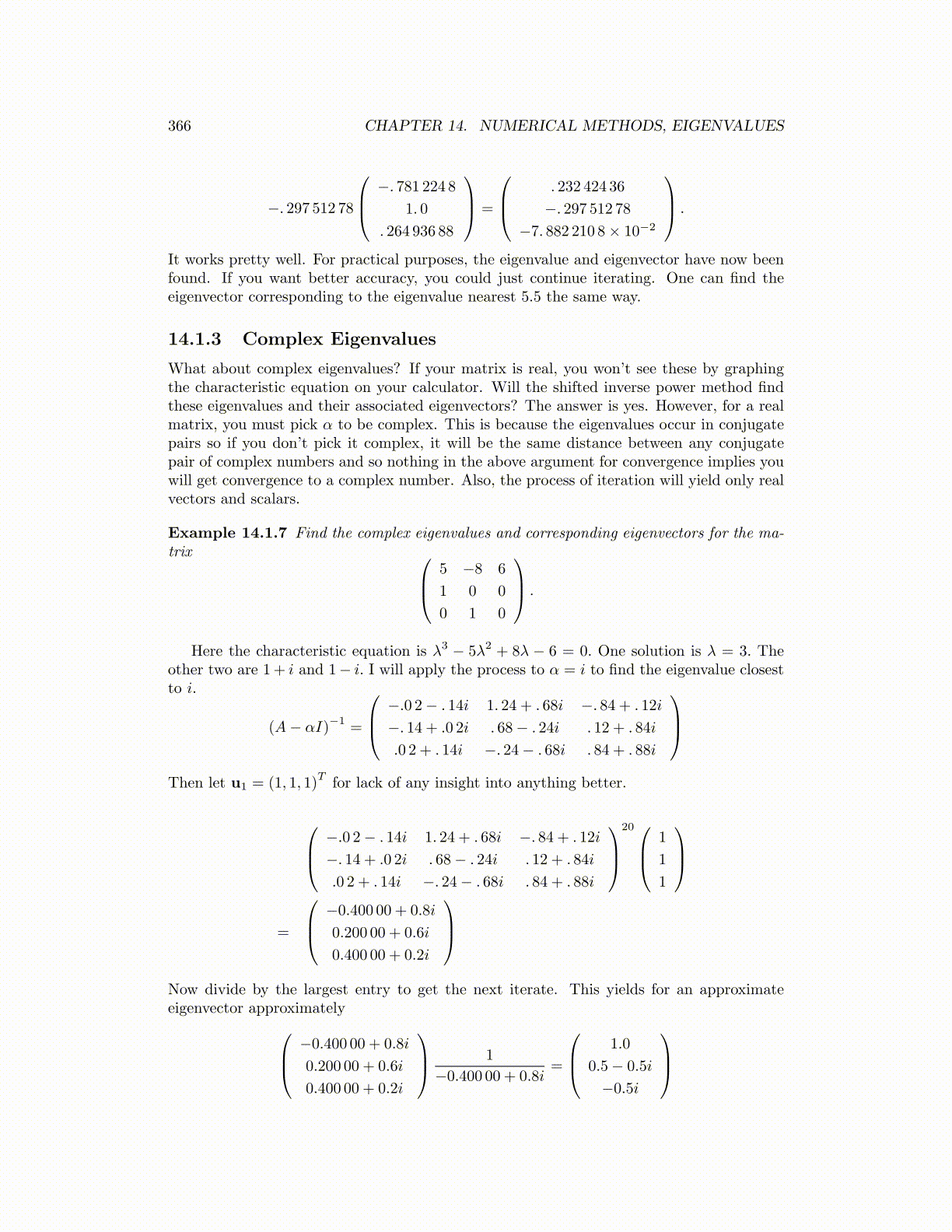
366 CHAPTER 14. NUMERICAL METHODS, EIGENVALUES
−. 297 512 78
−. 781 224 81. 0
. 264 936 88
=
. 232 424 36
−. 297 512 78−7. 882 210 8× 10−2
.
It works pretty well. For practical purposes, the eigenvalue and eigenvector have now beenfound. If you want better accuracy, you could just continue iterating. One can find theeigenvector corresponding to the eigenvalue nearest 5.5 the same way.
14.1.3 Complex Eigenvalues
What about complex eigenvalues? If your matrix is real, you won’t see these by graphingthe characteristic equation on your calculator. Will the shifted inverse power method findthese eigenvalues and their associated eigenvectors? The answer is yes. However, for a realmatrix, you must pick α to be complex. This is because the eigenvalues occur in conjugatepairs so if you don’t pick it complex, it will be the same distance between any conjugatepair of complex numbers and so nothing in the above argument for convergence implies youwill get convergence to a complex number. Also, the process of iteration will yield only realvectors and scalars.
Example 14.1.7 Find the complex eigenvalues and corresponding eigenvectors for the ma-trix 5 −8 6
1 0 0
0 1 0
.
Here the characteristic equation is λ3 − 5λ2 + 8λ − 6 = 0. One solution is λ = 3. Theother two are 1+ i and 1− i. I will apply the process to α = i to find the eigenvalue closestto i.
(A− αI)−1
=
−.0 2− . 14i 1. 24 + . 68i −. 84 + . 12i
−. 14 + .0 2i . 68− . 24i . 12 + . 84i
.0 2 + . 14i −. 24− . 68i . 84 + . 88i
Then let u1 = (1, 1, 1)
Tfor lack of any insight into anything better.
−.0 2− . 14i 1. 24 + . 68i −. 84 + . 12i
−. 14 + .0 2i . 68− . 24i . 12 + . 84i
.0 2 + . 14i −. 24− . 68i . 84 + . 88i
20 1
1
1
=
−0.400 00 + 0.8i
0.200 00 + 0.6i
0.400 00 + 0.2i
Now divide by the largest entry to get the next iterate. This yields for an approximateeigenvector approximately −0.400 00 + 0.8i
0.200 00 + 0.6i
0.400 00 + 0.2i
1
−0.400 00 + 0.8i=
1.0
0.5− 0.5i
−0.5i